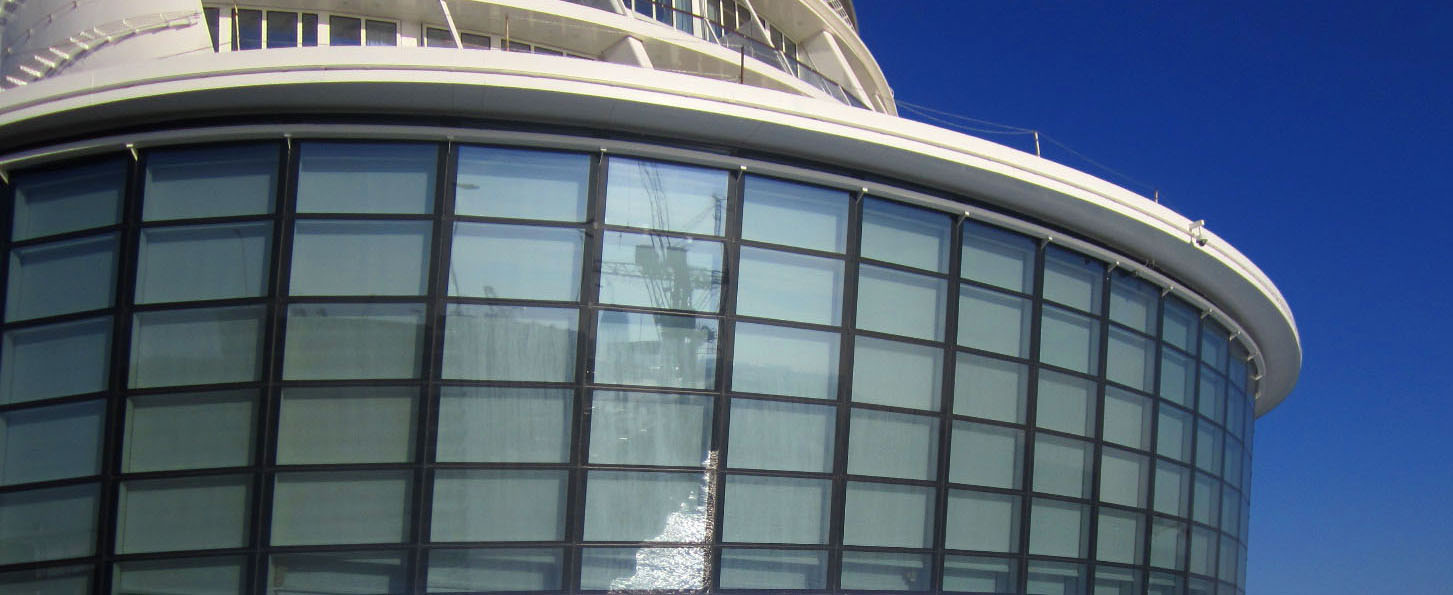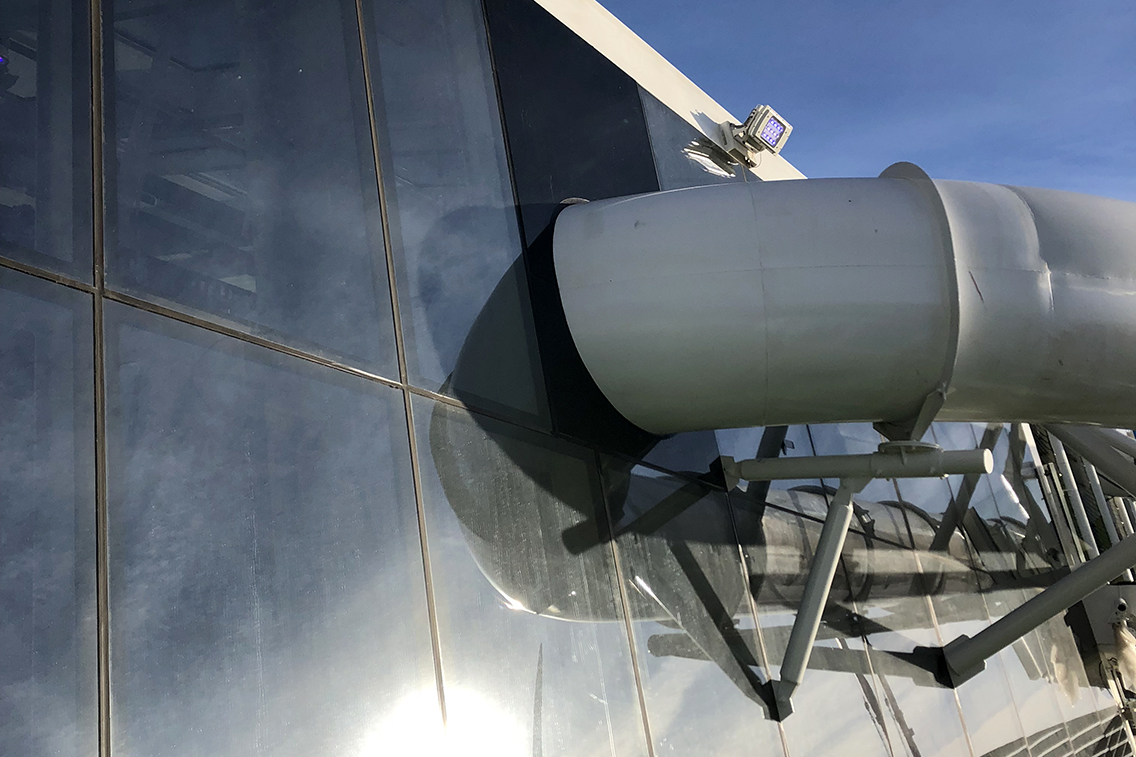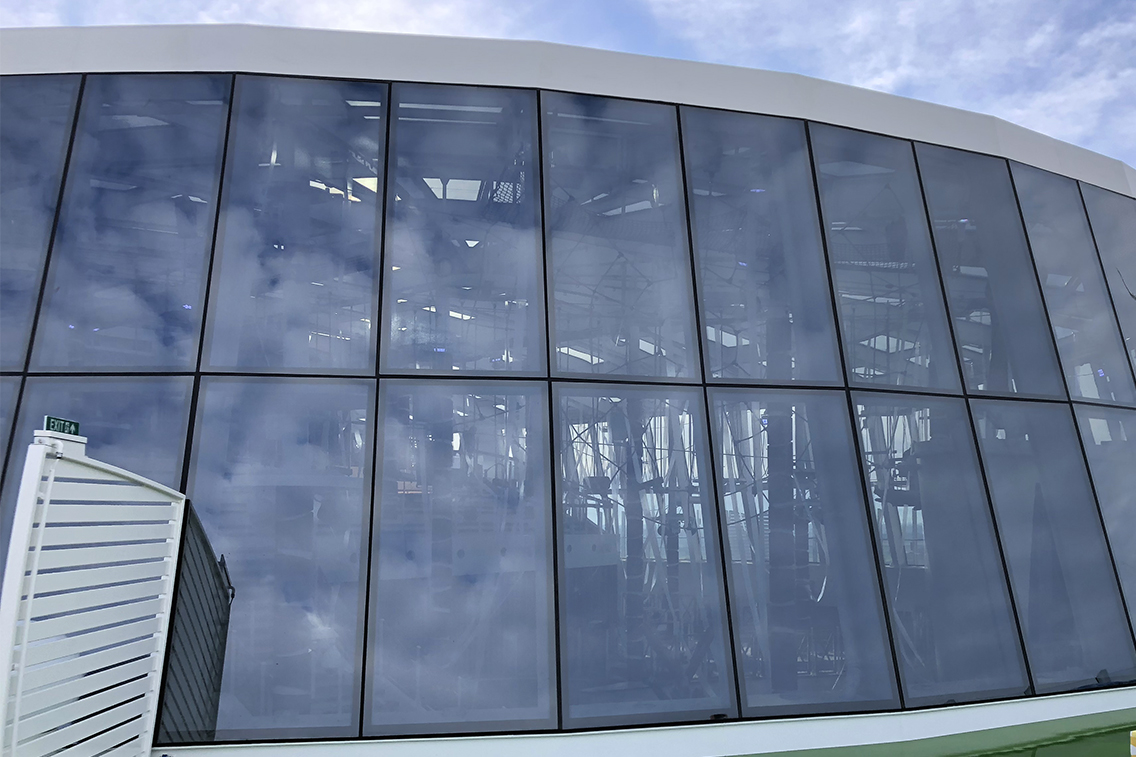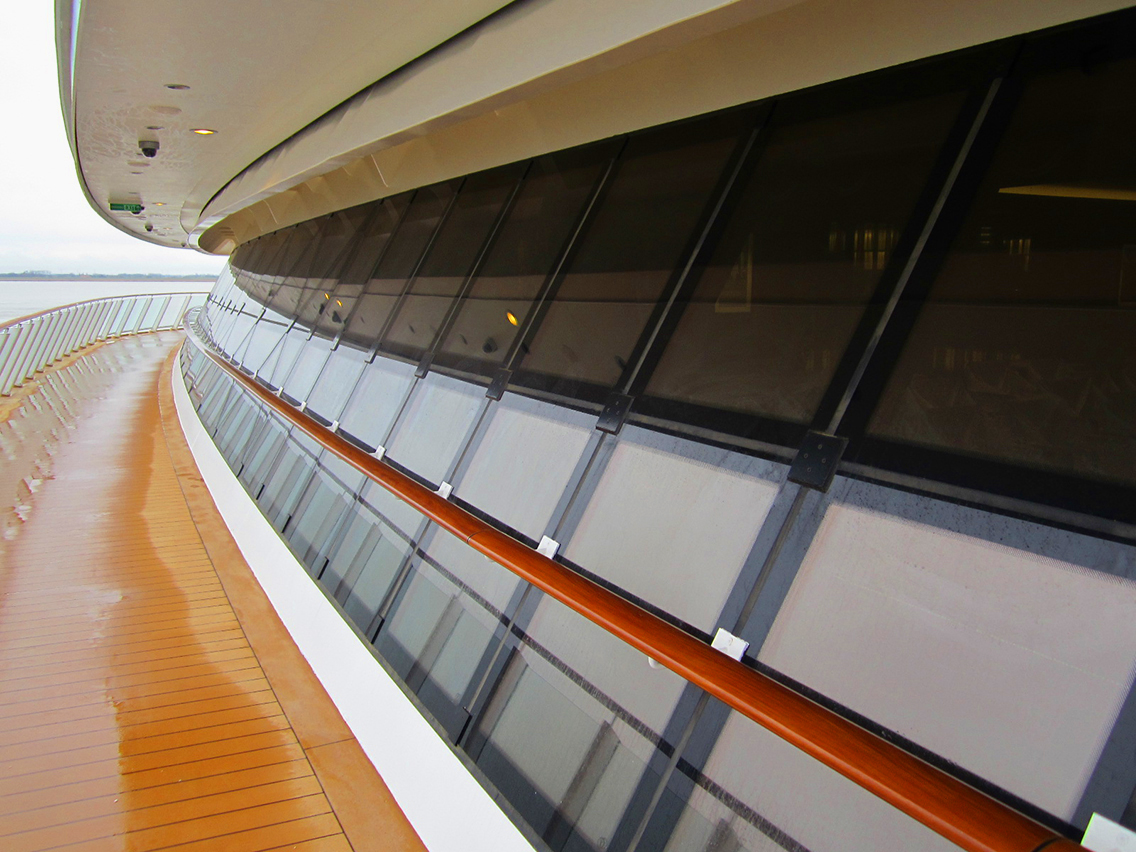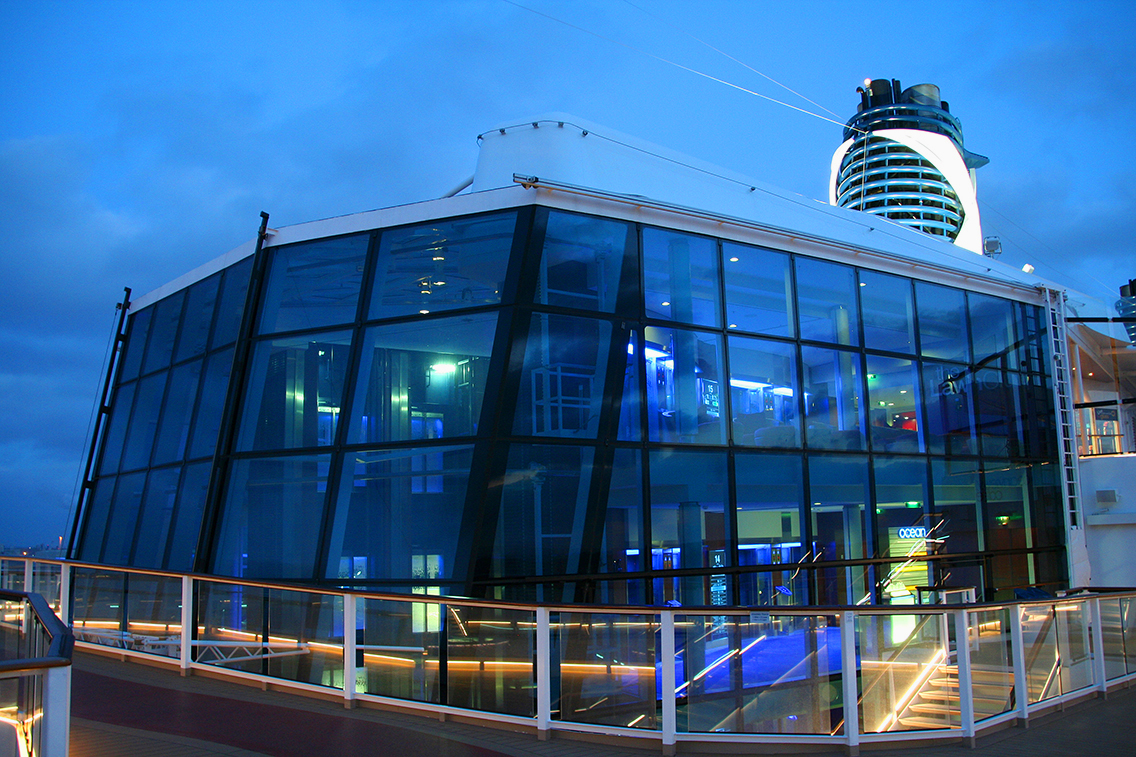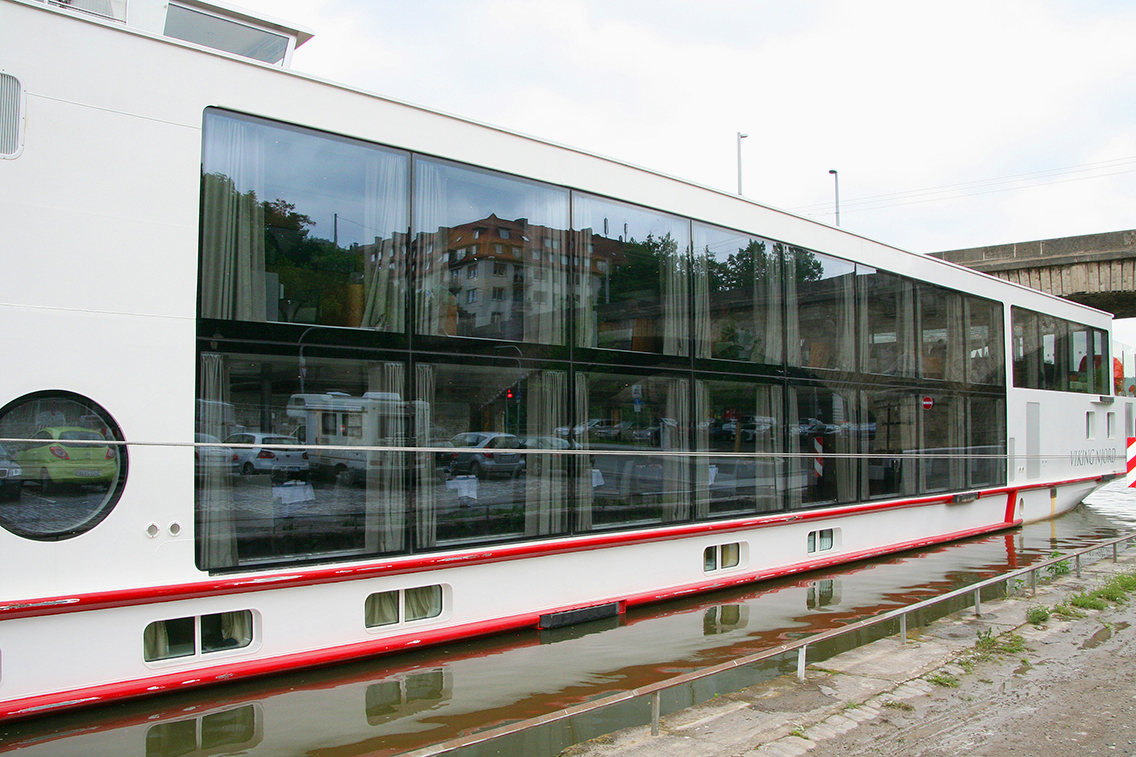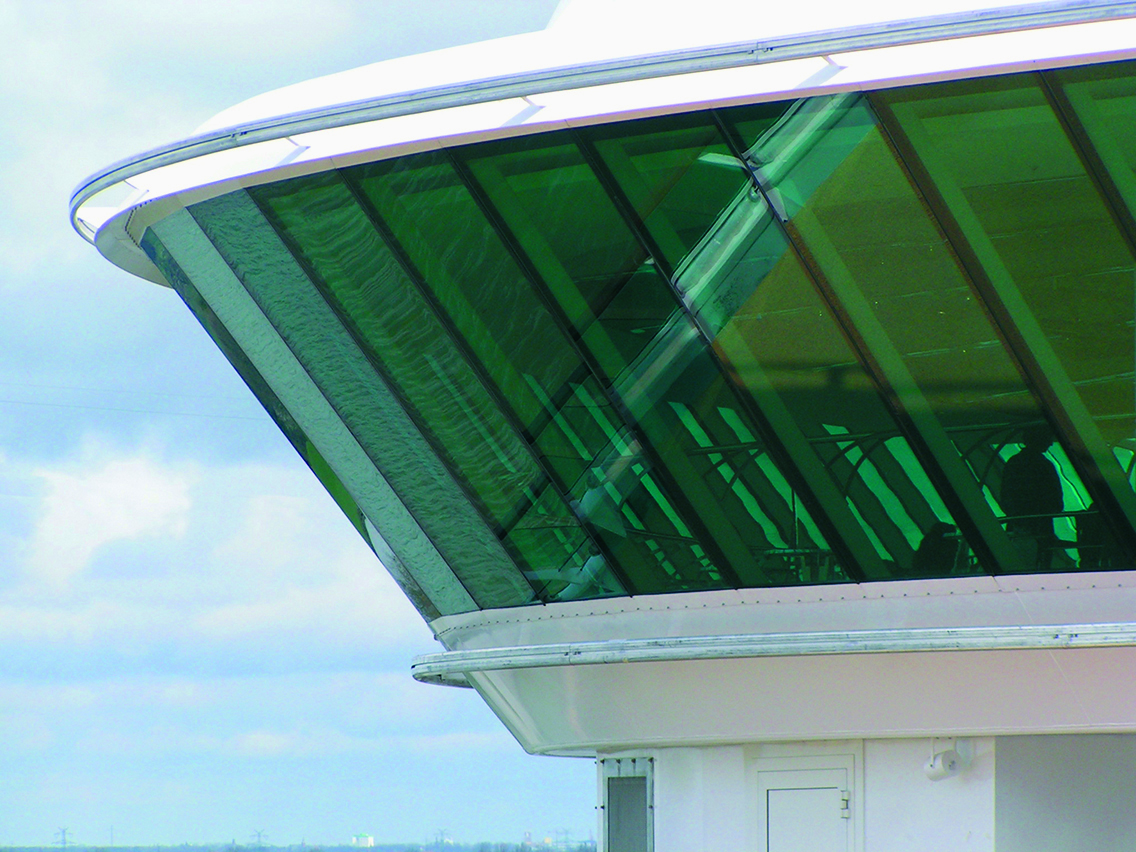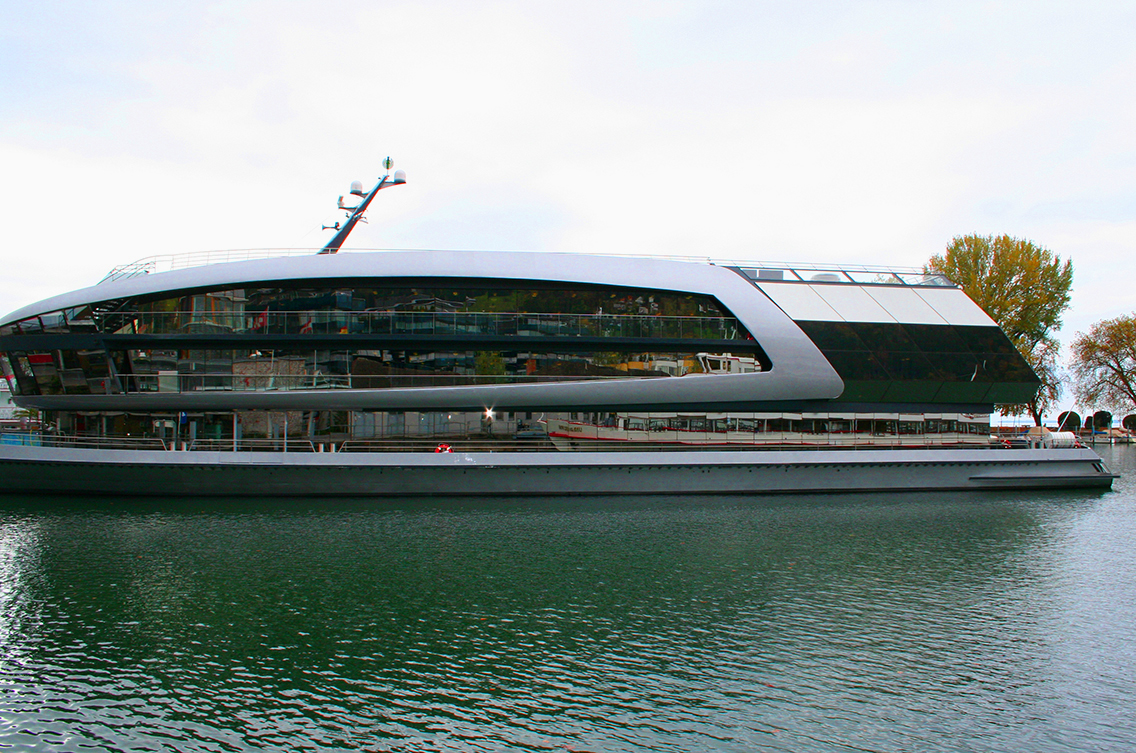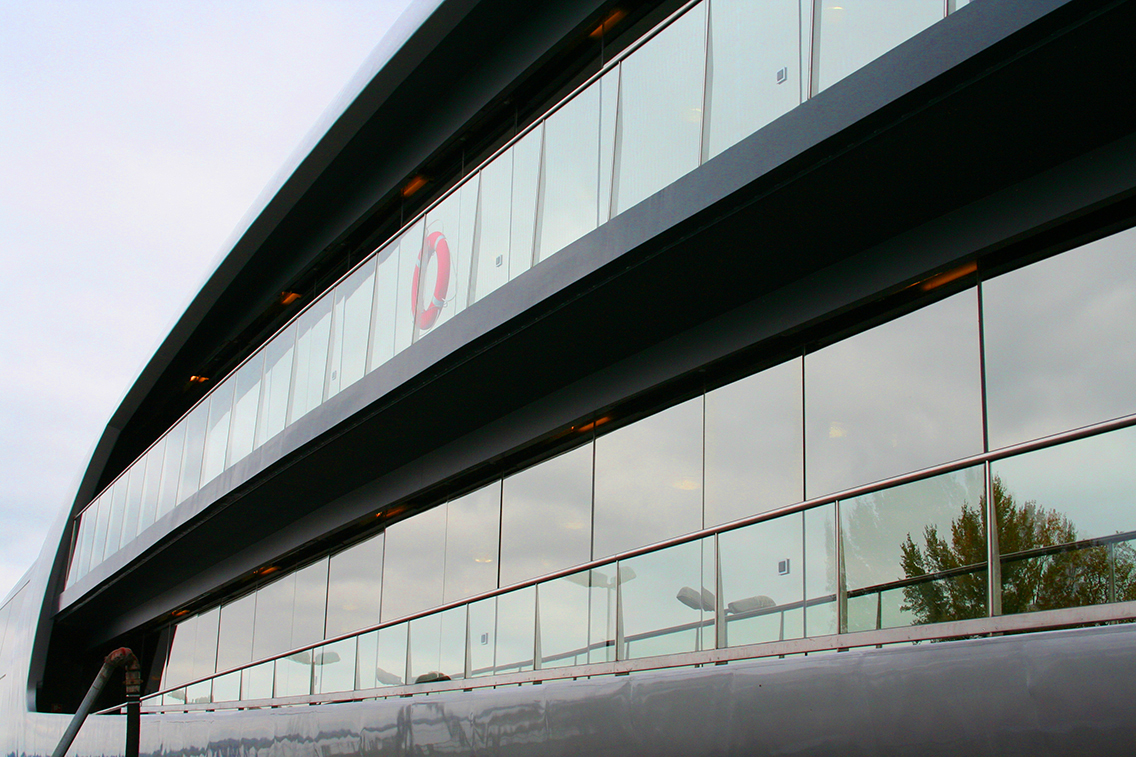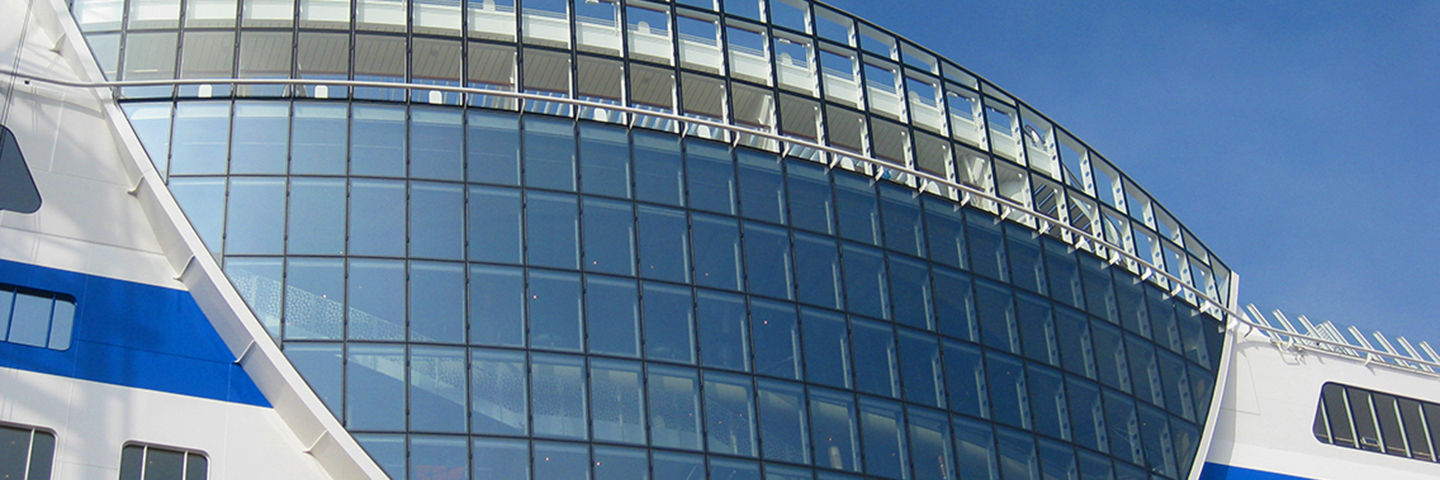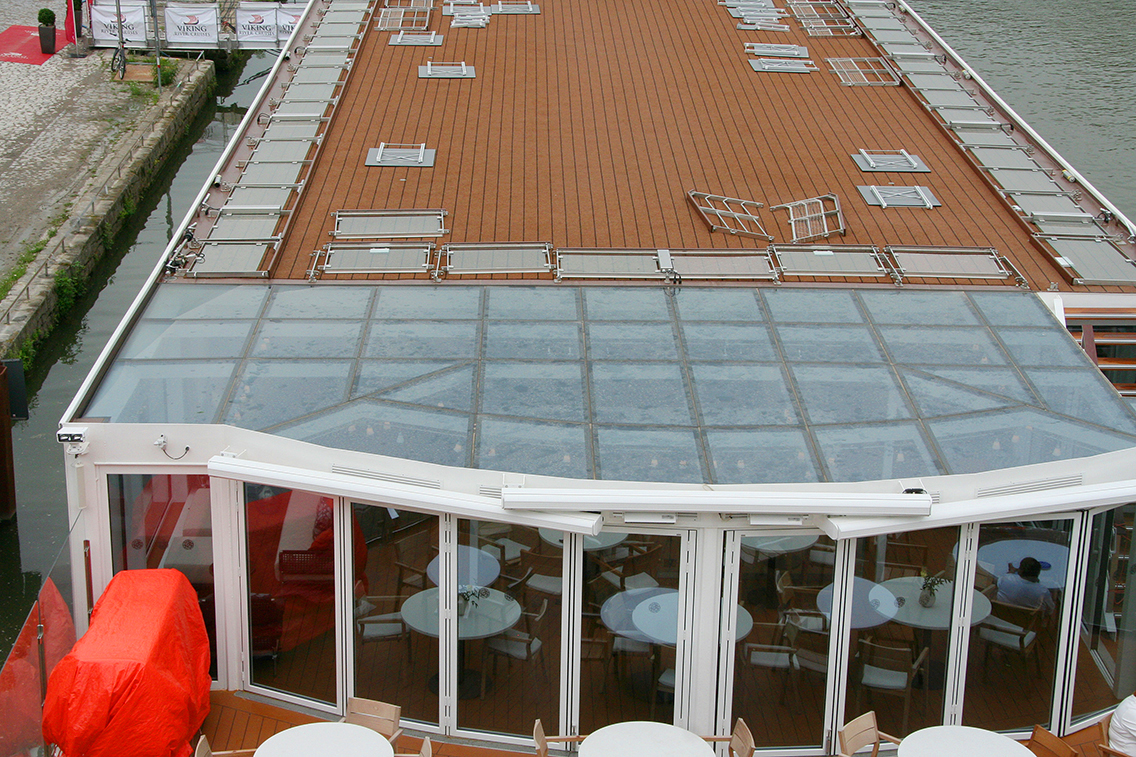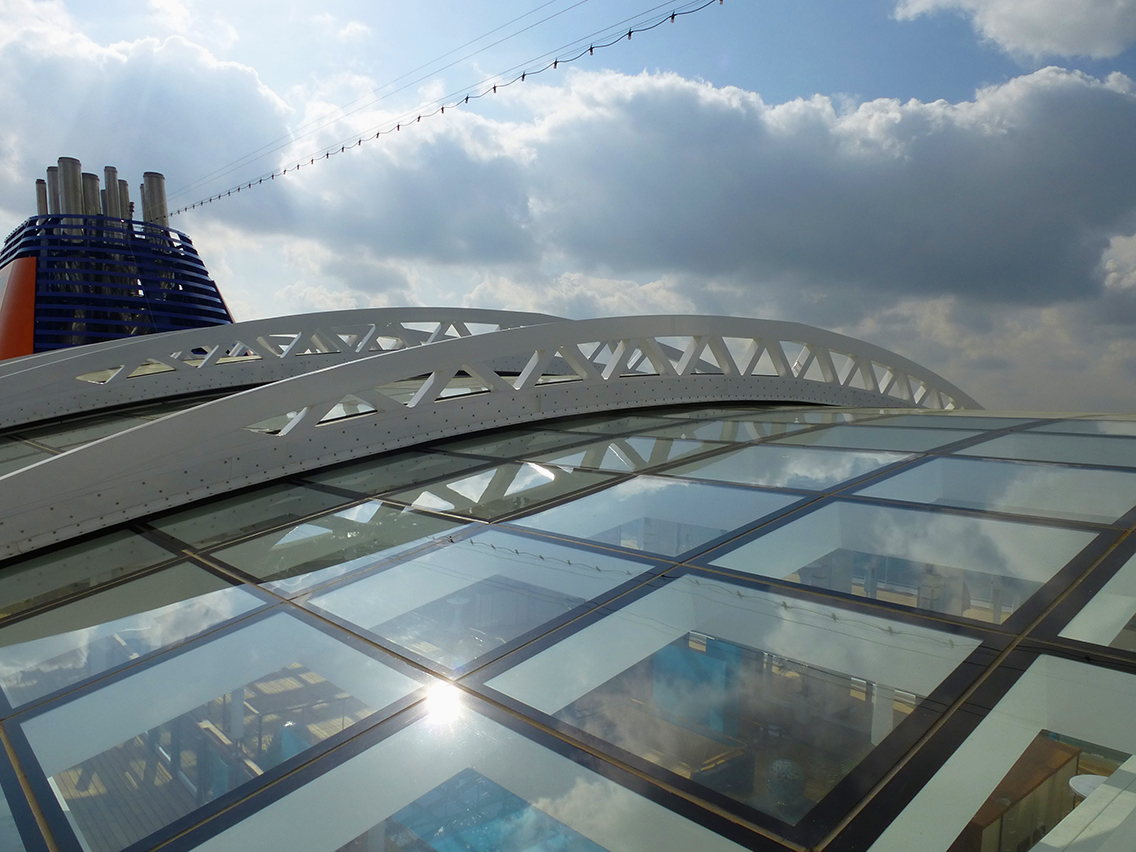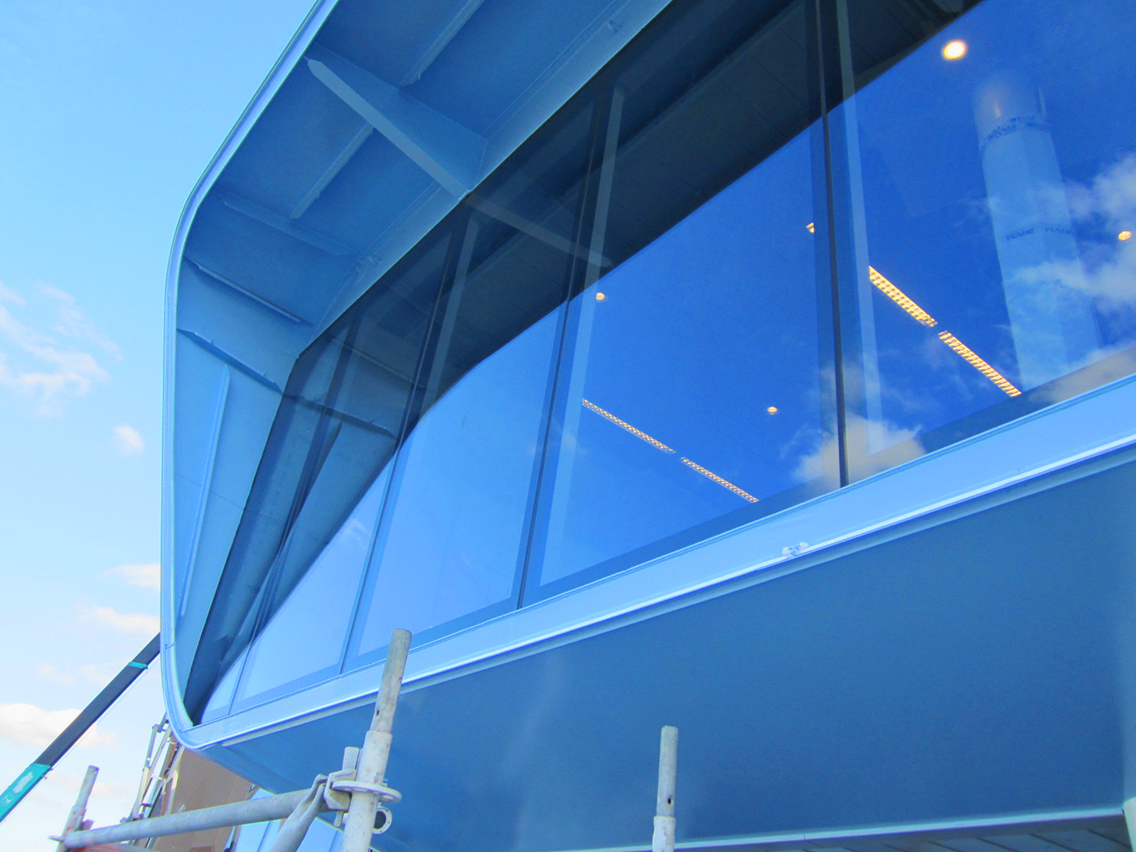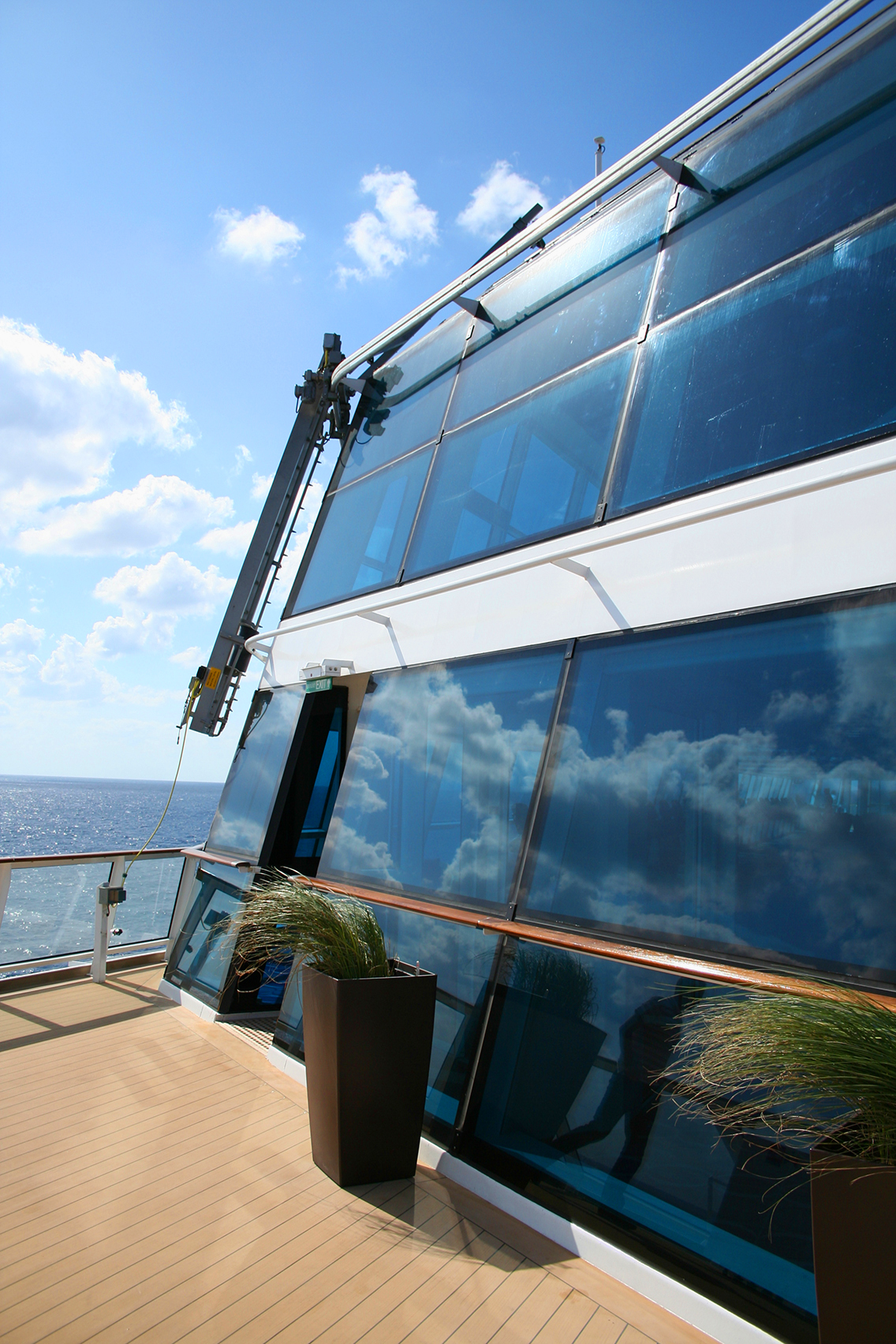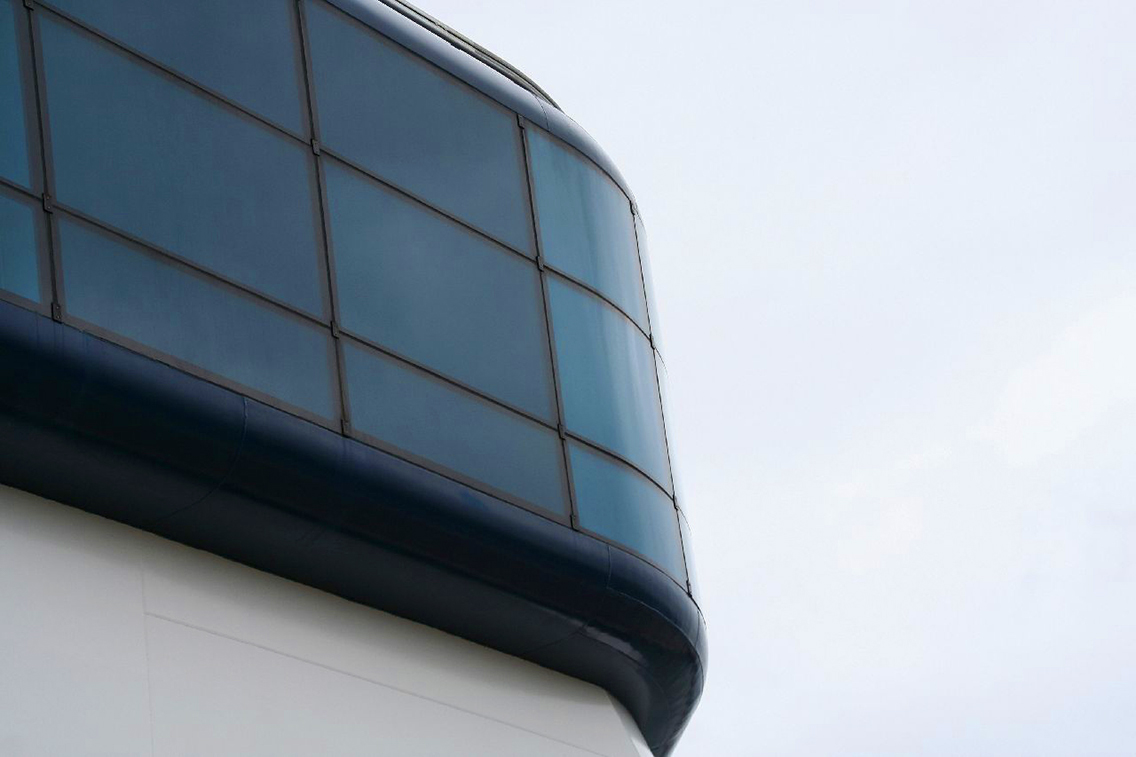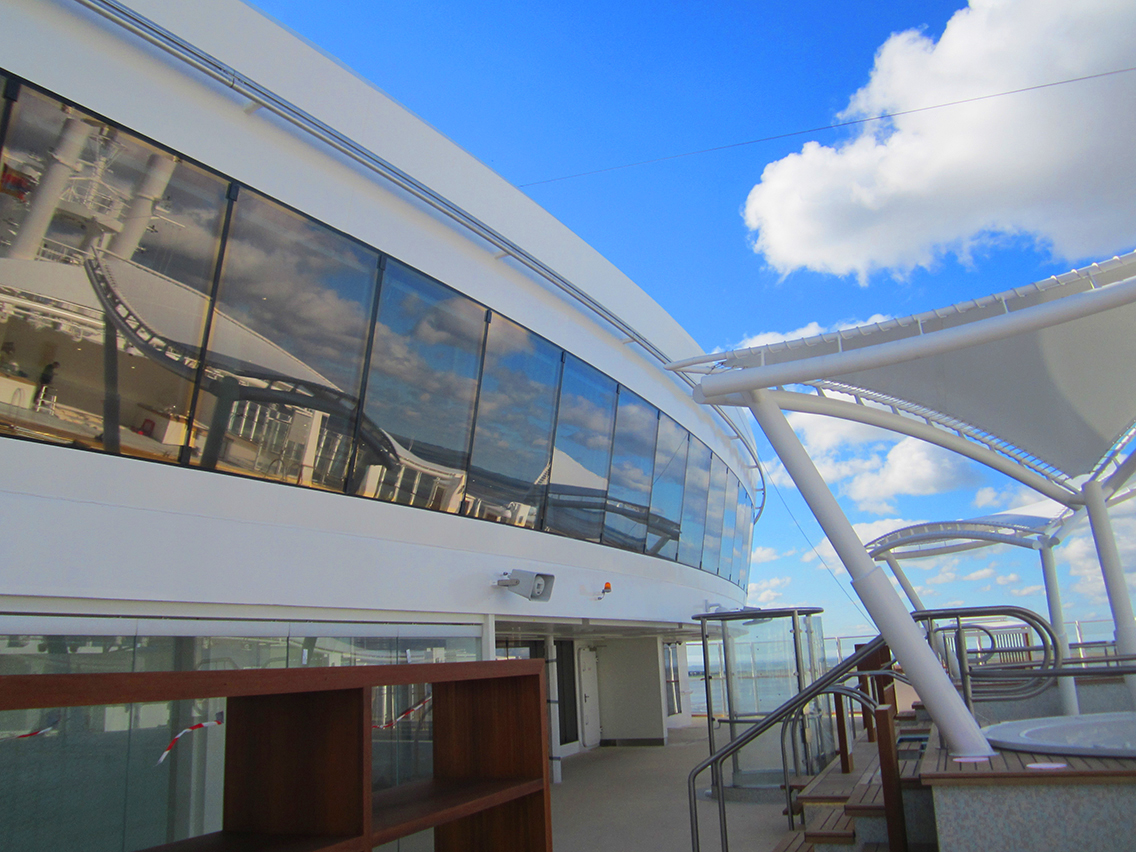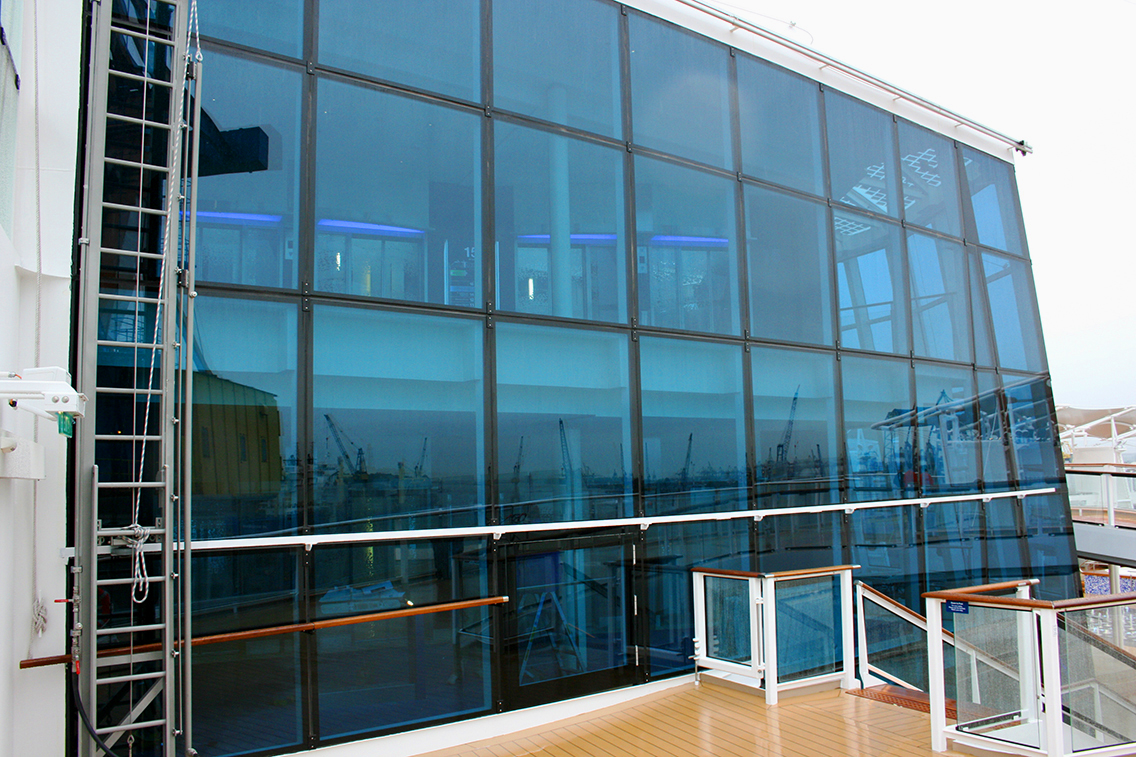Bonded Glass Facade
Glued Glass Constructions on Cruise Ships and Passenger Vessels
- Frameless glazing
- Free forms are possible in the design of glass surfaces
In glass bonding, the panes are bonded directly to the ship's structure.
In order to be able to take advantage of all of the benefits of structural sealant glazing, decisions concerning window installation should be made at an early stage of design planning.
Glass bonding technology offers the following benefits:
- Leaks are avoided since no water can collect on the edges of protruding frame sections. The glass is entirely embedded in sealant.
- Cleaning the glass is made much easier by the uninterrupted glass front.
- The glass is bonded directly to the load-bearing supports for the deck. As a result, the supports are in line with the window plane and allow for a barrier-free interior.
- Thanks to the uniform positioning on the adhesive bed, there are no stress peaks which overstrain the glass even under extreme distortions.
- The bonding technology even allows the glass to be installed into prefabricated blocks during the construction phase before these are put together in the dry dock to form the ship.
- Construction tolerances in steel construction can be offset to a certain extent through the application of adhesive in various thicknesses. This saves a great deal of effort since fewer straightening works are required.
Continuous, frameless glass surfaces make elegant and transparent construction forms possible. For a ship, on which space is a valuable commodity, glass projects with a frameless design support the illusion of more space and an unbounded view of the panorama which is rolling by.
In design and architecture, this technology offers valuable possibilities such as:
- Architectural freedom
- Modern design
- Innovative glass structures
Wishes such as solar-filtering, protection from light, heat protection and privacy protection, or any combination of these, can be taken into account during project planning. Here, you benefit from our specialist knowledge and our many years of experience. We are happy to provide you with advice and an economical, efficient and technically flawless solution in glass.
The bonding and installation process
Naturally, the bonding and installation process requires expertise and experience. Much like certification for a welder, the employees responsible for bonding receive appropriate training. The training for bonders, bonding experts and bonding engineers is set out in harmonized directives from the DVS (for Germany) or the EWF (for Europe). The operational requirements for the execution of bonding processes are regulated by the DVS directive DVS-3310, published in 2003. By now, the classification companies have published directives for the use and processing of highly elastic adhesive bonds, which should be observed during realization of professional bonding.
The construction and work steps which precede installation must be adapted for the bonding. The structure must be designed such that the glass can be embedded appropriately for its geometry. The coating on the substructure must be designed to be suitable for the adhesive. This means that the corrosion protection which is applied to the substructure must be compatible with the adhesive. Many coating products have already been tested and approved by the adhesive manufacturers. New tests are performed before bonding as required. When used correctly, all of these factors promise significant potential for cost savings and improved product quality.
Considering the following conditions, the product quality can be significantly improved:
- The construction and work steps which precede installation must be adapted for the bonding.
- The structure must be designed such that the glass can be embedded appropriately for its geometry.
- The coating on the substructure must be designed to be suitable for the adhesive.
- The corrosion protection which is applied to the substructure must be compatible with the adhesive.
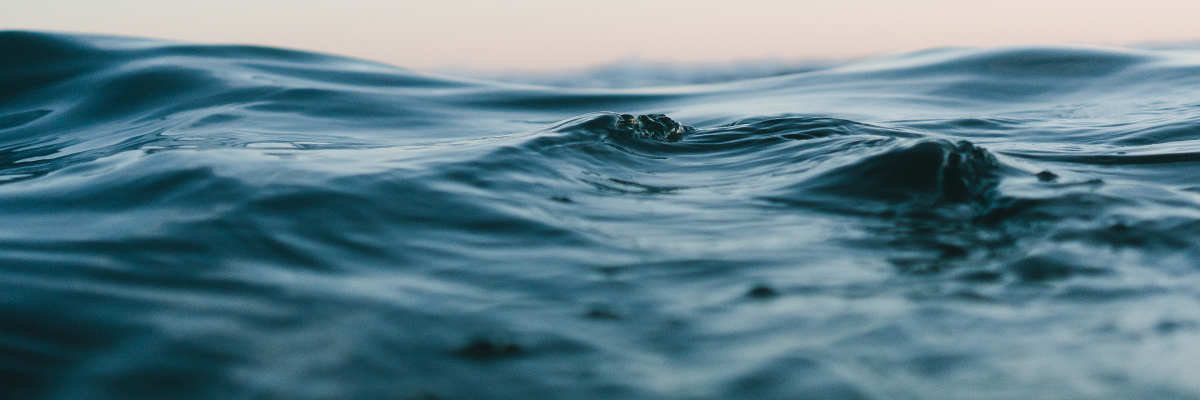
Ask us!
We send information, give advice and answer questions all around your project
More Information